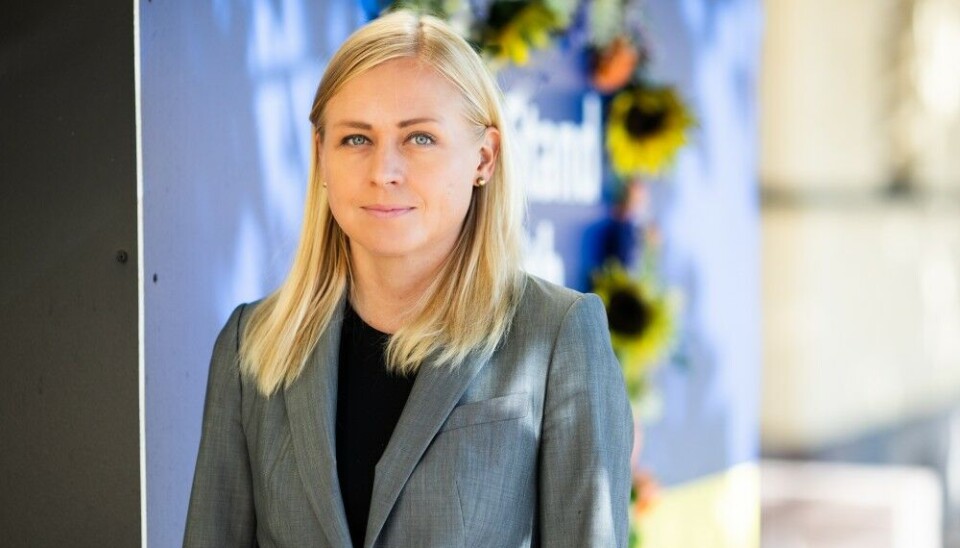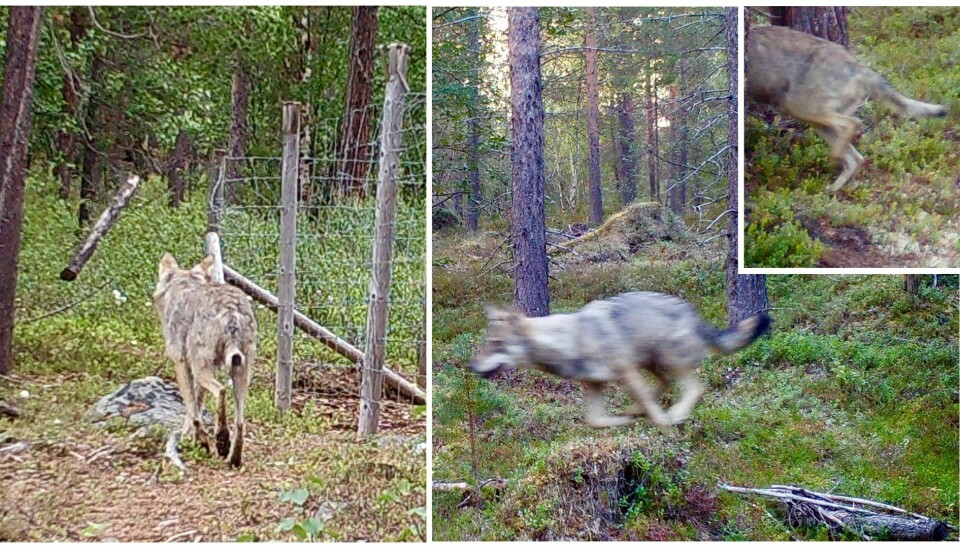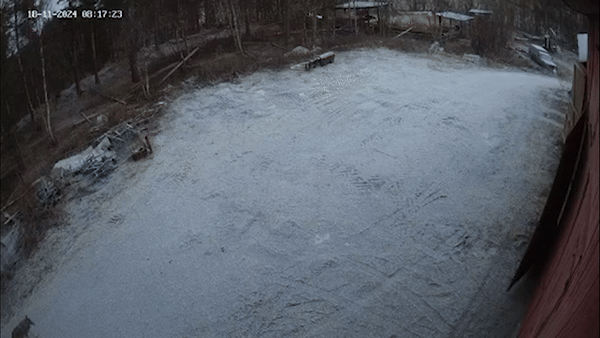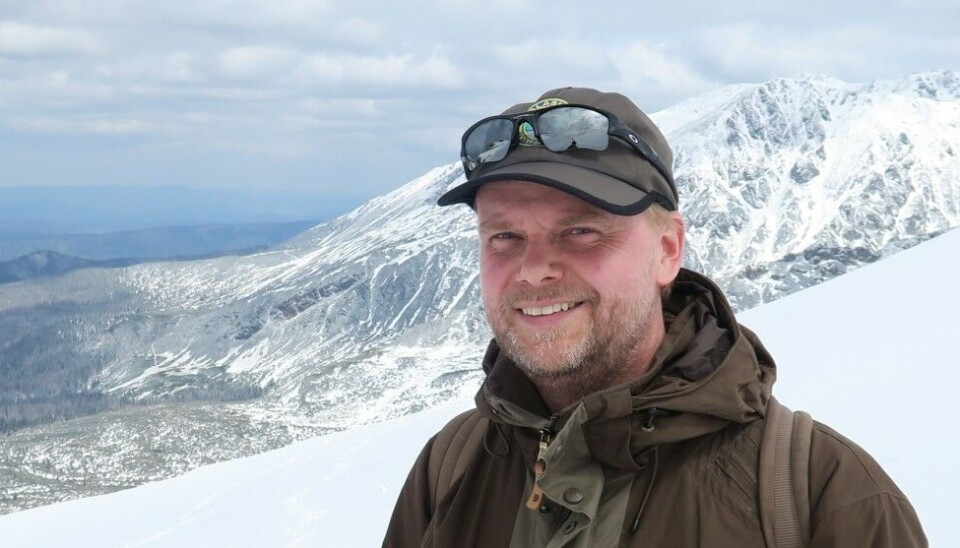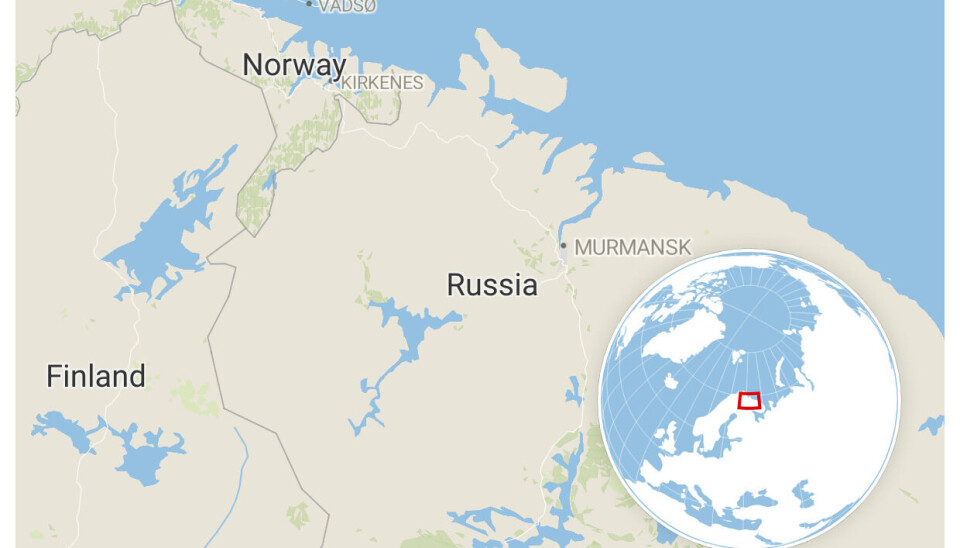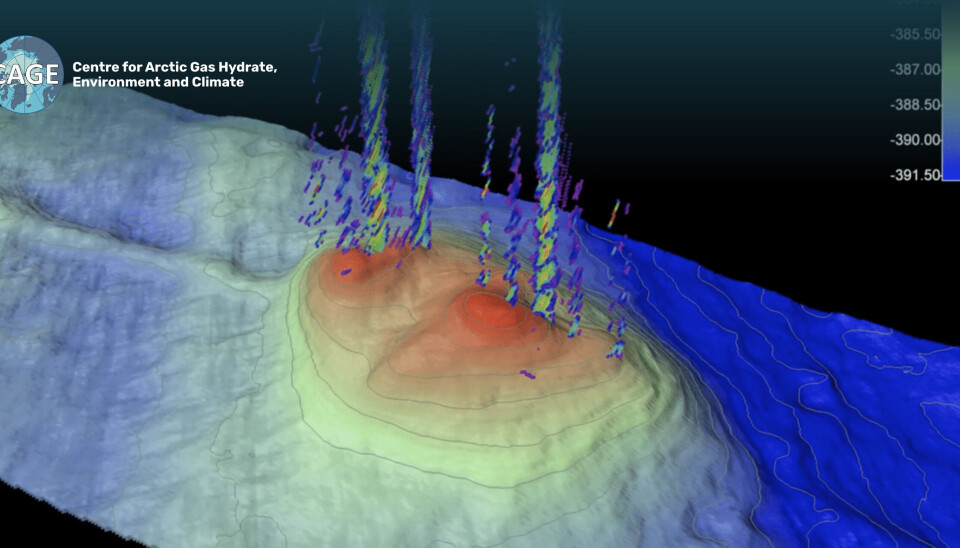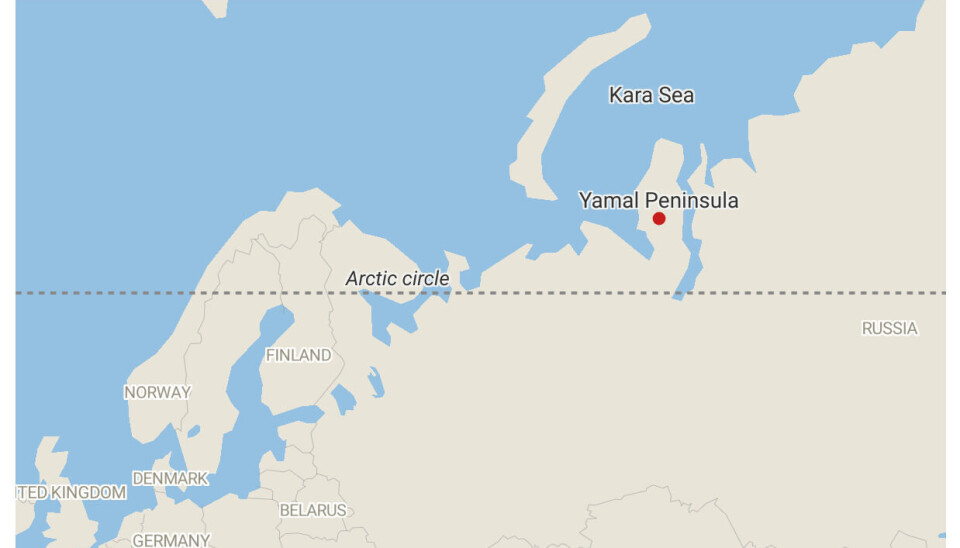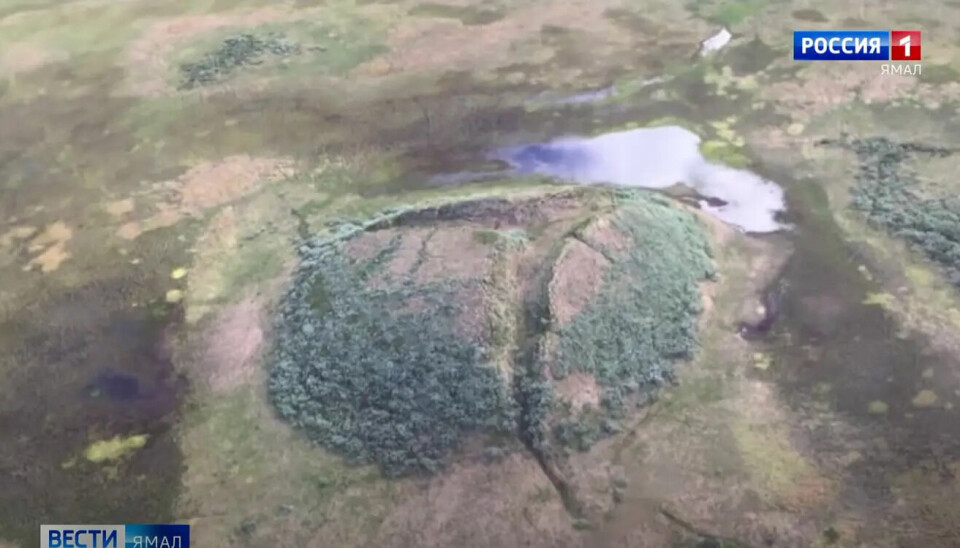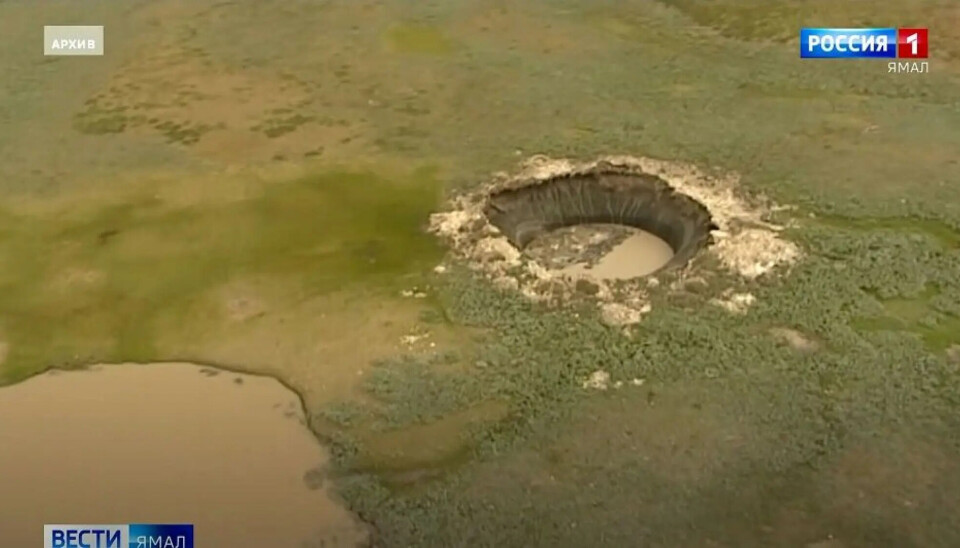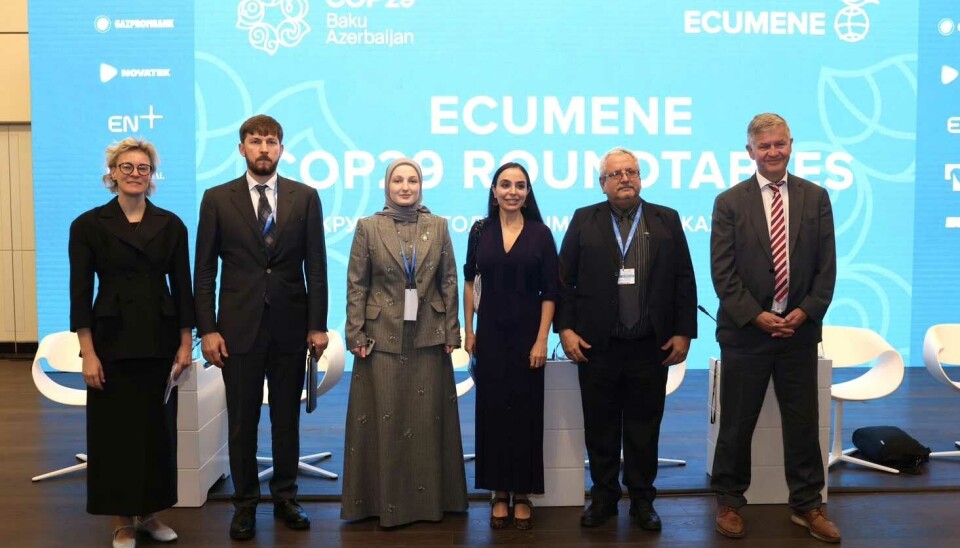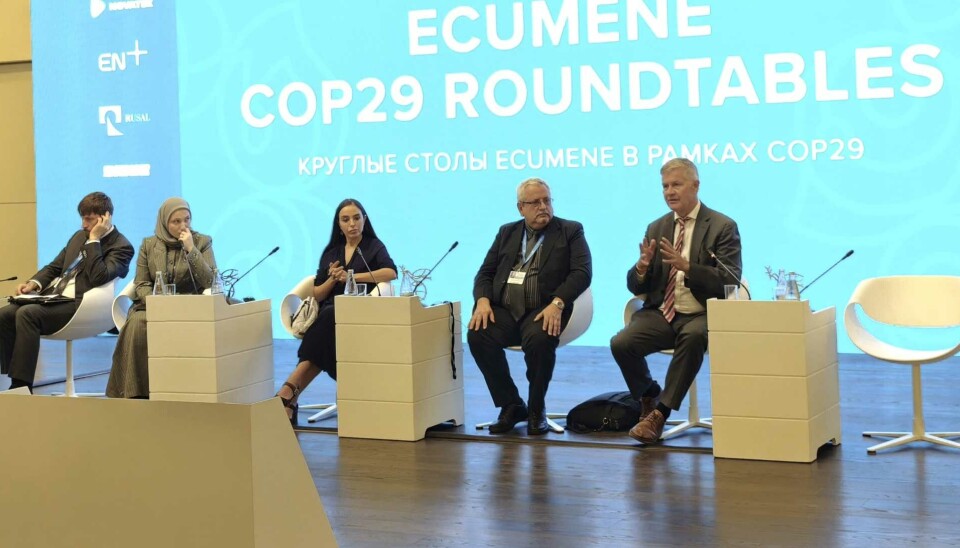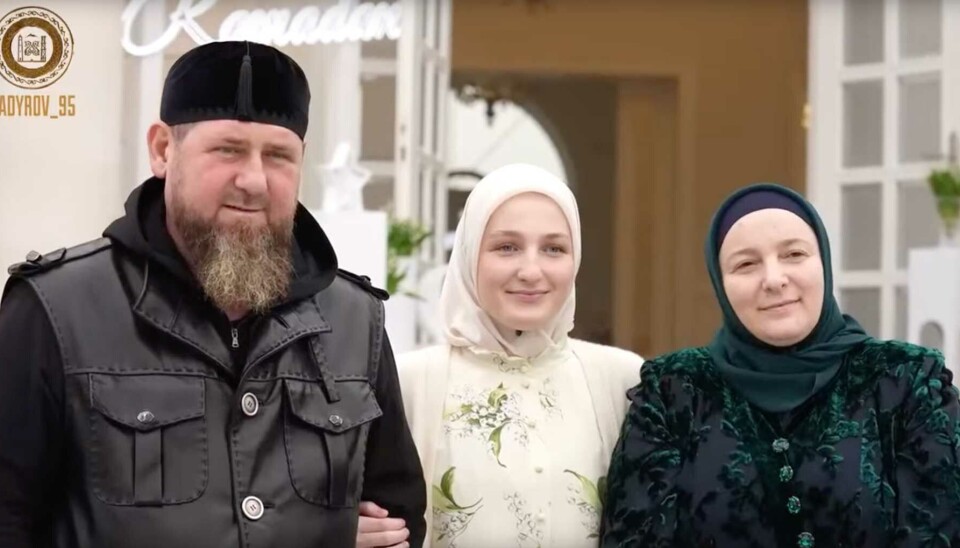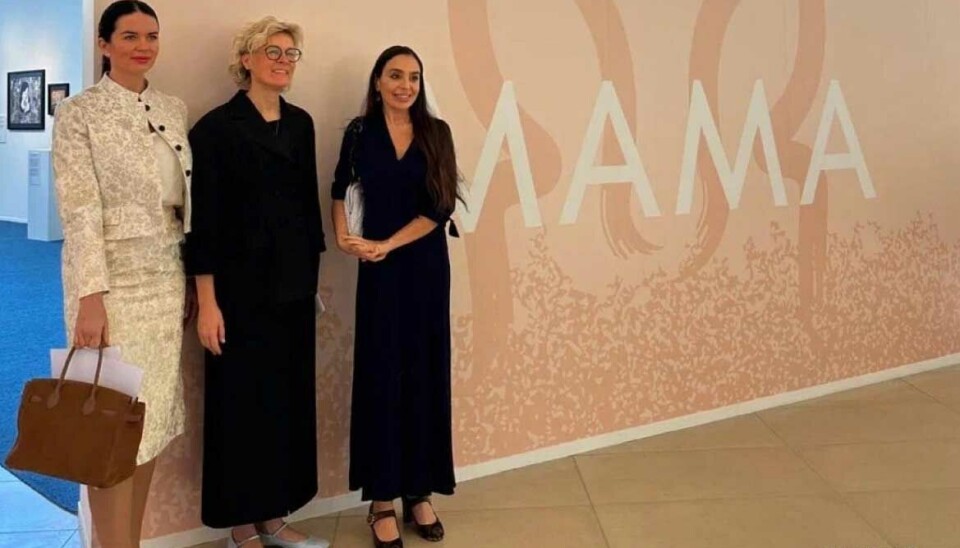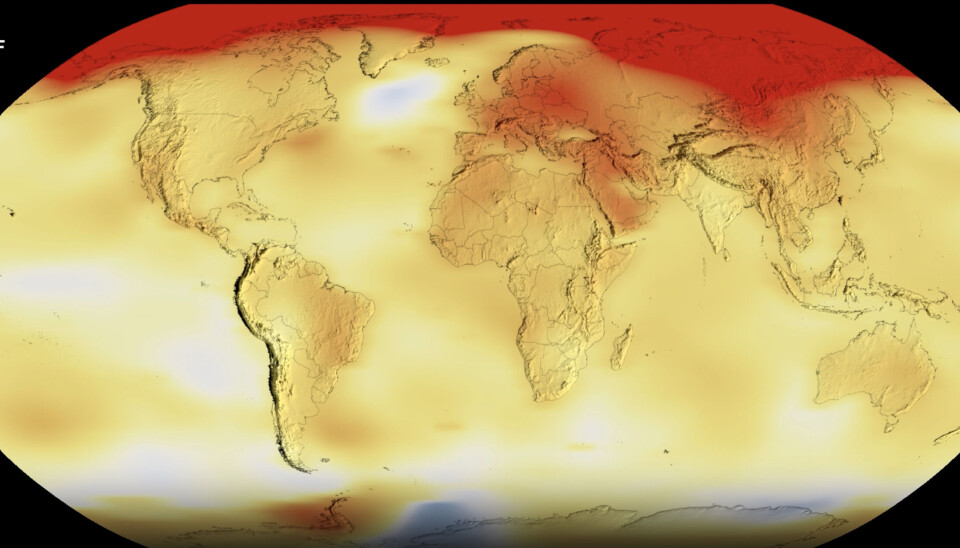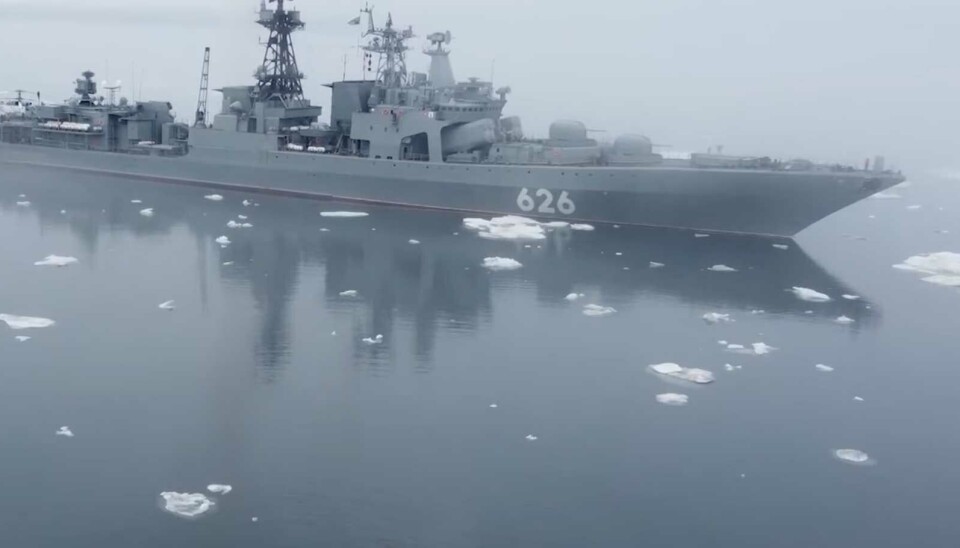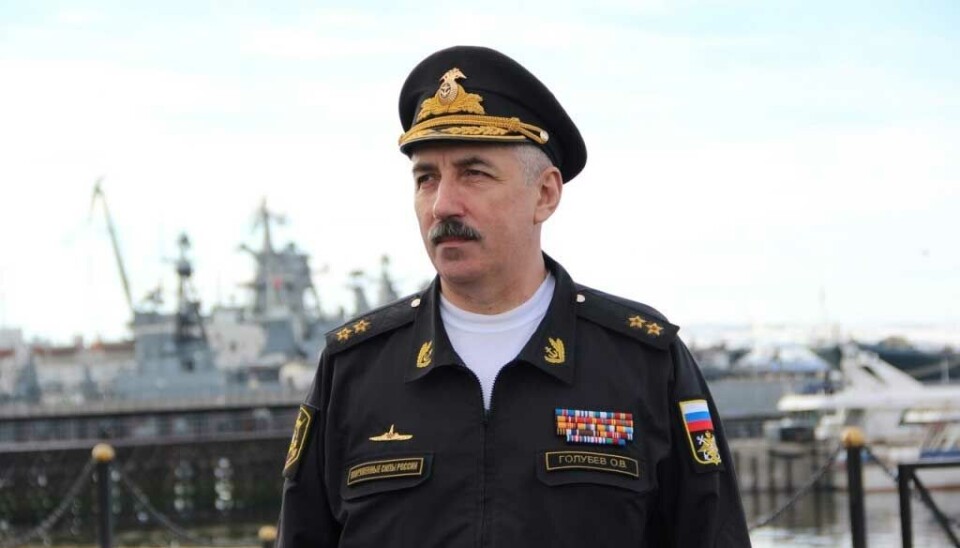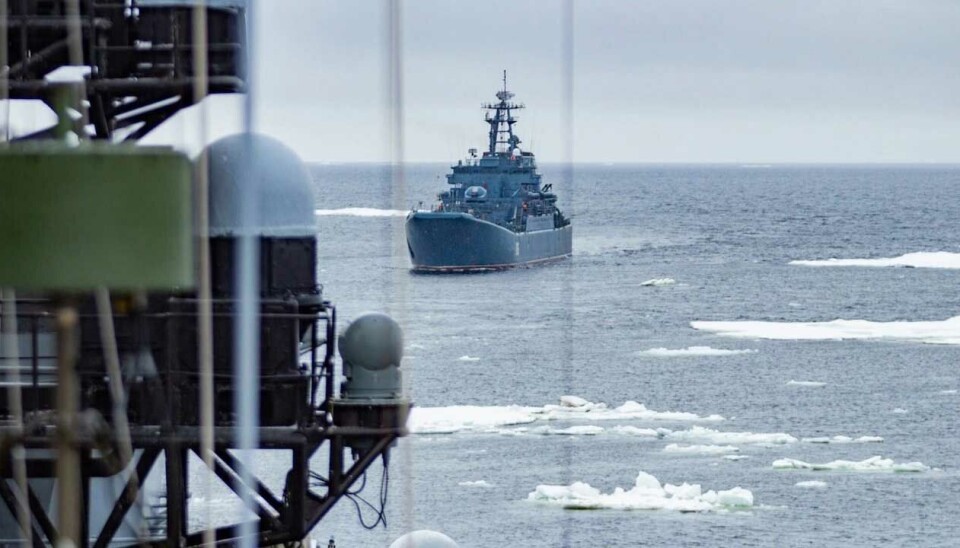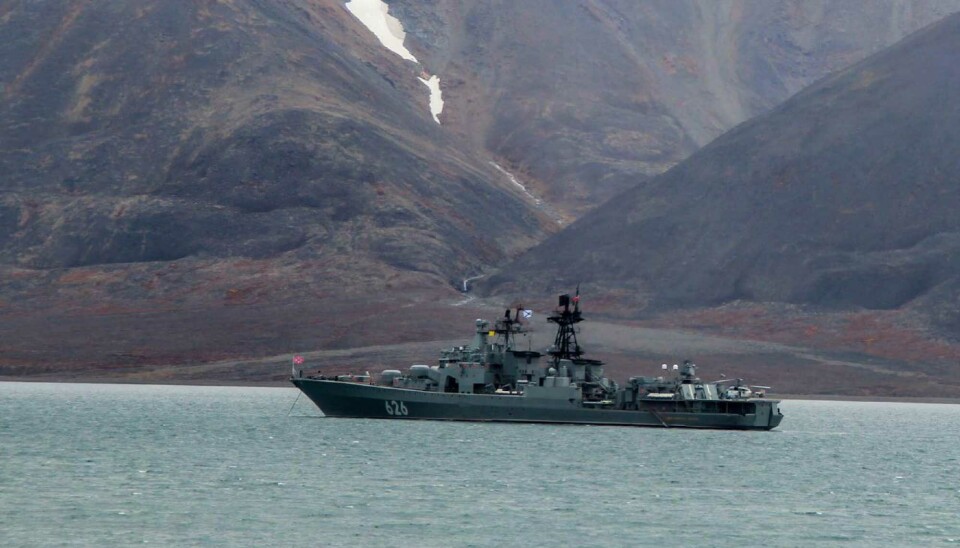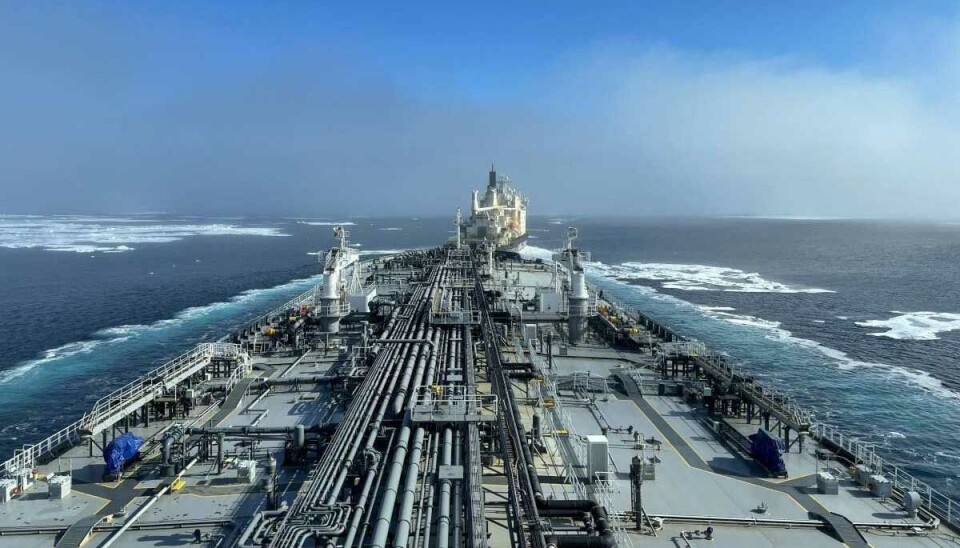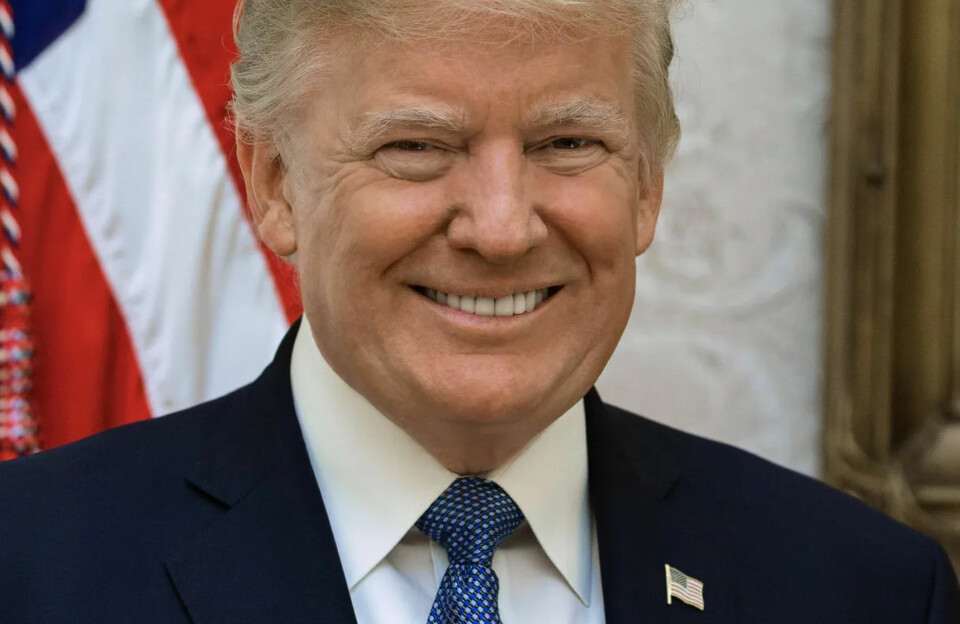Njord Wegge is professor with the Norwegian Military Academy and chairs the research group "Security and Military Power in the Arctic" at the Norwegian Defence University College.
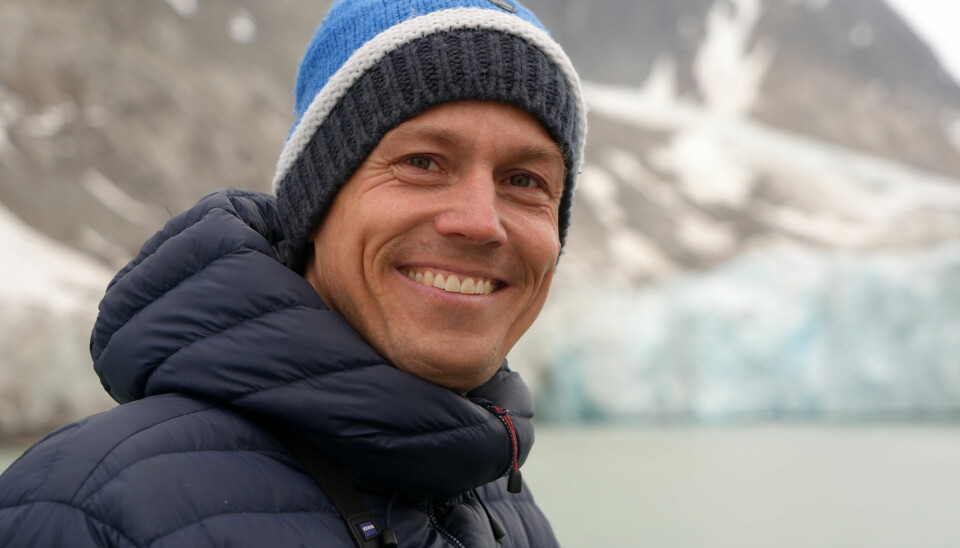
Photo: Thomas Nilsen
With Russia's expansionist war a new security landscape has emerged also in the north, argues professor Njord Wegge. NATO's new members Finland and Sweden have, unlike Norway, no restrictions for allied operations.
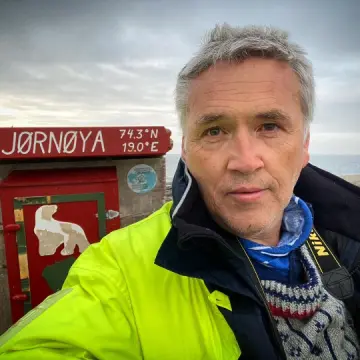
Thomas Nilsen
24 November 2024 -
THE BARENTS OBSERVER
Norway’s self-imposed security and defense restrictions in Finnmark region have a historical precedent: Not to provoke a Moscow that has its main naval nuclear assets based along the coast of the Kola Peninsula.
It might look strange, however, today when Swedish, British or American electronic surveillance aircraft fly missions to collect data from Russia’s northern region, the planes have to circumnavigate Norway’s northeast corner. The aircraft can patrol the entire NATO eastern border, up to northernmost Finland, but are then forced to fly west across Norway before turning east again over international airspace in the Barents Sea.
Likewise, NATO army soldiers are welcome to exercise in east-Lapland near Finland’s border with Russia, but not in the Varanger area of Norway. This despite the fact that Russia is daily jamming GPS signals, conducts grey-zone operations and holds live-shooting naval exercises provoking the Norwegians.
"It is a somewhat unique set of restrictions." explains professor Njord Wegge.
The self-imposed restrictions in Norway reflect a historic situation where the Nordic region played a delicate role on NATO's Northern flank in the East-West balance of power during the Cold War.
He says the aim was to reassure Moscow of Norway’s non-aggressive intensions.
Except in Finnmark, NATO has boosted its presence by building multinational battlegroups from the Black Sea in the south to the Baltics and now to Finland in the north. Finland is the member country with the longest border with Russia, 1,340 km.
Wegge says today's realities are very different and that the north is not separated from the rest of Europe.
"A new security landscape has emerged, also in the north, as Russia is conducting an expansionist war, seeking to conquer territory further south on the European continent," Wegge argues.
In addition to the Military Academy is Njord Wegge Professor II with UiT The Arctic University of Norway.
The professor calls for a debate about the overall questions of what set of policies and guiding lines are best fitted to ensure the key Norwegian security goals: to avoid war and ensure Norwegian independence, territorial integrity an preservation of the democratic system of governance including ensuring political room of maneuver.
"My argument is that there is a need to revisit the self-imposed restriction and to assess their appropriateness and function in this new geopolitical situation."
Deterrence and reassurance
Njord Wegge says there are two sides to be weighted in Norway's security dilemma.
"We should be sensitive to, and aware of, the pitfalls where one part's increased security might lead to insecurity on the other side, where the second parts counter-measures again leads to more insecurity on the first part – hence leading to an unstable armament/security spiral, e.g. in the shape of an arms race."
Weighting the arguments, professor Wegge makes clear that the self-imposed restrictions has become out-dated as they reflect a past historic period. Especially so for the restrictions related to limitations of allied training in the eastern part of Finnmark, but Wegge says it might also be valid for the more principal debate about allied bases in Norway more generally.
"I do not see having a unique sets of self-imposed restrictions in Norway increasing peace stability on Norway borders as there are today few reasons to have different rules from Finland and Sweden," says Wegge.
U.S troops to Ivalo
Last December, Finland signed an agreement with the United States allowing for American troops to be based in Ivalo, a short 40 minutes drive from the border with Russia's Kola Peninsula.
U.S. soldiers are already frequently exercising together with Finnish and other Nordic military units at Rovajärvi training area in Lapland. Likewise is U.S. Air Force fly wing-by-wing with Finnish fighter jets from Rovaniemi airbase located on the Arctic Circle.
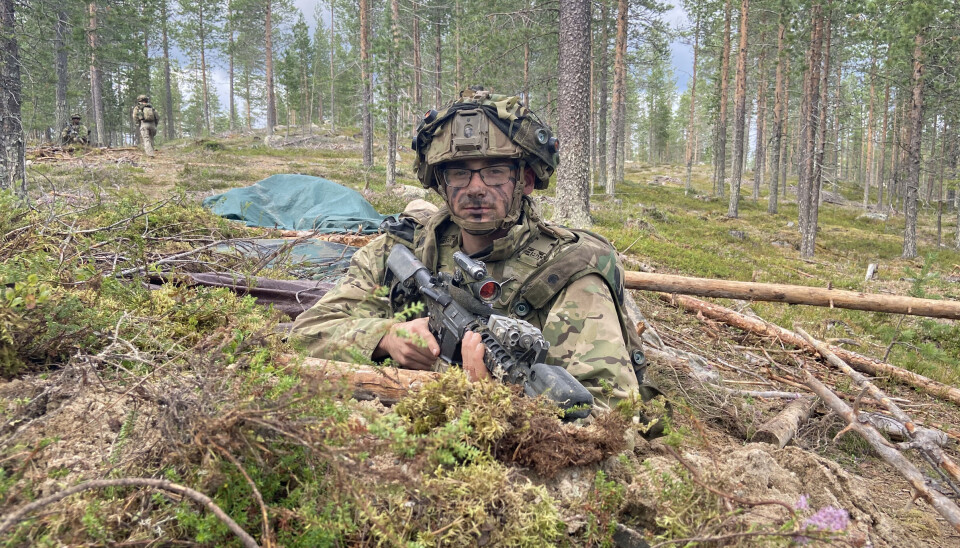
A U.S. army soldier on exercise in the forest near Kemijärvi in Lapland, not far from the Finland's Salla border check-point to Russia. Finland became a full member of NATO on April 4, 2023. Photo: Thomas Nilsen
Professor Njord Wegge fears a consequence of having different rule-sets limiting allied training and operations might create more insecurity and confusion as it affect allied training and routine missions in the Nordic region.
One could argue that unique Norwegian rule set is depriving Norwegian policy-makers an appropriate flexibility to potentially adjust to a rapidly changing threat environment, something that has become even more important in today’s more unstable and unpredictable security environment.
The ability to move larger amounts of military material, vehicles and personnel between Sweden, Finland and Norway was a main scenario during the large-scale NATO exercise Nordic Response last winter. Some 5,000 soldiers from northern Sweden and Finland then crossed the border into Finnmark near Kautokeino and continued to the Barents Sea coastline near Alta.
Although self-imposed restrictions, Swedish and Finnish soldiers were allowed to Porsangermoen, the camp where Norway is about to build up its new Finnmark brigade. On return from exercise Nordic Response, some of the Finnish armored vehicles were on the roads east of the traditional eastern-line Oslo has set for NATO training.
Earlier this week in the meeting for the Nordic defense cooperation (NORDEFCO), the involved countries committed to establish military corridors for smooth cross-border transportation of troops and equipment.
“It is of paramount importance that we are able to receive and move allied forces across the Nordic region as rapidly and efficiently as possible,” said Norway’s Defense Minister Bjørn Arild Gram as he signed an agreement to ease reinforcements.
No changes, PM says
Norway's Prime Minister, Jonas Gahr Støre, has previously said to the Barents Observer that there are no plans to lift restrictions on NATO activities near border with Russia.
“…. we have no plans to change the pattern that is recognizable to Norway,” Støre said.
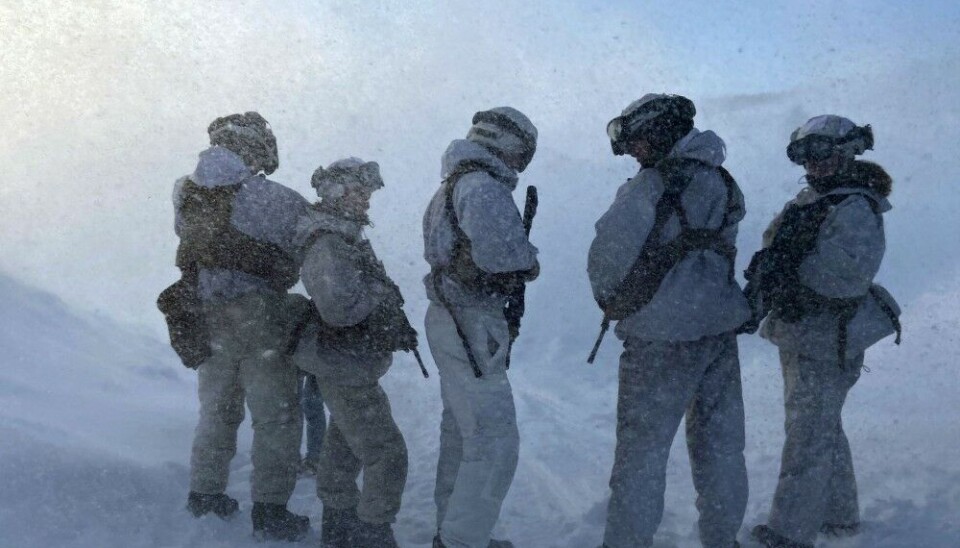
Snow, wind, frost. Training warfare in challenging Arctic climate conditions is everyday life for Norwegian soldiers in the eastern part of Finnmark. Allied NATO soldiers, however, are not allowed to train on defending this part of Norway that might be the first to be exposed to potensial Russian aggression. Photo: Thomas Nilsen
NATO has no limitations on flights in international airspace north of Norway’s Finnmark region. Earlier in November, a U.S. Air Force B-52 strategic bomber crossed the Arctic from North-America to Europe via a route east of Svalbard, according to a flight pattern map posted on X by NATO’s Supreme Headquarters Allied Powers Europe (SHAPE).
Russia has in recent years expanded the military runway at the Nagurskoye base on Franz Josef Land, by Moscow said to deploy bombers with the air-launched Kinzhal hypersonic missiles
The Barents Observer reported that the American nuclear-capable bomber came near the arctic archipelago of Franz Josef Land before it flew over the Barents Sea. Approaching mainland Europe, the B-52 had to fly west of Norway’s restricted airspace before the mission continued into Finland over Utsjok and Inari in the north.
Warning from Moscow
When Norwegian regional officials this summer talked about plans to strengthen cooperation with NATO allies in Finnmark, Russia’s foreign ministry spokeswoman, Maria Zakharova, warned of escalating tensions.
“The militarization of the Norwegian north will not lead to greater security. Rather it will have an opposite effect, triggering an escalation of tensions,” she said.
Zakharova, well-know for lashing out at European neighbouring states, added that the Russian-Norwegian border is gradually turning into a well-armed and fortified forward position of the North-Atlantic alliance.
Without mentioning Russia's military stronghold a stone's throw from the border, Zakharova underlined that her country is not threatening Norway. She then called on locals on the Norwegian side of the border to remember history:
We are confident that the residents of East Finnmark, which the Red Army liberated from the German and Finnish invaders 80 years ago, are aware of this as no one else.
Lies and disinformation have become a trademark in Moscow's intensified re-writing of Second World War history. Finland never invaded Norway. Meanwhile, Russian diplomats at the Consulate General in the border town of Kirkenes spend most of their time to stir strife at war memorials, attempting to fuel tensions between northern Norway and Oslo.
Gradual changes
Per Erik Solli, an defense expert with the Norwegian Institute of International Affairs (NUPI), has in detail studied how Norway's self-imposed restrictions for allied military air traffic has changed over time. Solli himself is a former F-16 fighter pilot flying missions from both Bodø and Banak airports in northern Norway during the last period of the Cold War.
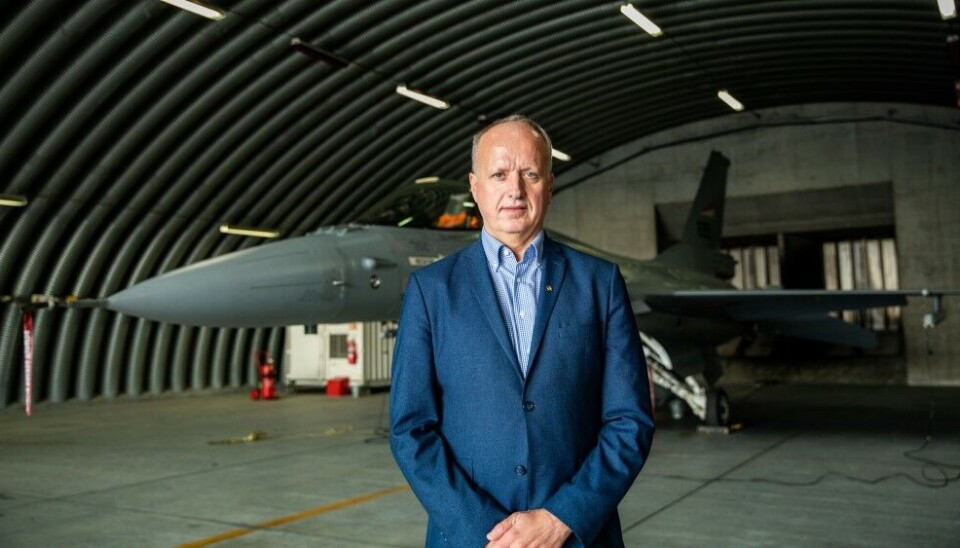
Per Erik Solli was F-16 pilot in the Norwegian Air Force from 1985 to 1994 and is today working as a Senior Defense Analyst. Photo: Private
He explains how restrictions have changed over time. Normally through a more gradual evolution.

This U.S. electronic surveillance aircraft flew north over Norwegian airspace to about 28°E and turned east over the Barents Sea first into international airspace. It collected data from Russia's military north of the Kola Peninsula and returned back again by circumnavigating east Finmark region and flew into Finnish airspace on its way back to the United Kingdom. Screenshot from FlightRadar24.com
"Since 2014 the parallel regime of deterrence has become far more robust. Especially since 2022. The self imposed restrictions have also been calibrated the last few years. They have been adjusted to adapt to the new geopolitical situation emerging after Finland and Sweden became member of NATO," Solli tells.
This is especially so in regards to British and American aircraft in transit via Norwegian air space.
Solli recalls how surveillance aircraft during the Cold War flew missions over the Barents Sea and other parts of international air space in the Arctic.
"That normally happened from bases on Greenland, Iceland or from the United Kingdom.
Per Erik Solli says it is important to have in mind that not only have the self-imposed restrictions changed geographically over time, but also in regards to what kind of NATO forces can operate where.
"Particularly important changes came after 1995 and in the 2000s," he says.
Today, military cargo and passenger planes from other NATO members are allowed to land at the airports in both Kirkenes and Lakselv.
The regime is different depending on if it is smaller or larger land forces, navy vessels, fighter jets, bomber planes, ISTAR [Intelligence, Surveillance, and Reconnaissance] aircraft or helicopters.
Per Erik Solli says the debate today should be about the remaining restrictions Norway have for allied training and exercises in east-Finnmark region.
24 November 2024 -
THE BARENTS OBSERVER
Norway’s self-imposed security and defense restrictions in Finnmark region have a historical precedent: Not to provoke a Moscow that has its main naval nuclear assets based along the coast of the Kola Peninsula.
It might look strange, however, today when Swedish, British or American electronic surveillance aircraft fly missions to collect data from Russia’s northern region, the planes have to circumnavigate Norway’s northeast corner. The aircraft can patrol the entire NATO eastern border, up to northernmost Finland, but are then forced to fly west across Norway before turning east again over international airspace in the Barents Sea.
Likewise, NATO army soldiers are welcome to exercise in east-Lapland near Finland’s border with Russia, but not in the Varanger area of Norway. This despite the fact that Russia is daily jamming GPS signals, conducts grey-zone operations and holds live-shooting naval exercises provoking the Norwegians.
"It is a somewhat unique set of restrictions." explains professor Njord Wegge.
The self-imposed restrictions in Norway reflect a historic situation where the Nordic region played a delicate role on NATO's Northern flank in the East-West balance of power during the Cold War.
He says the aim was to reassure Moscow of Norway’s non-aggressive intensions.
Except in Finnmark, NATO has boosted its presence by building multinational battlegroups from the Black Sea in the south to the Baltics and now to Finland in the north. Finland is the member country with the longest border with Russia, 1,340 km.
Wegge says today's realities are very different and that the north is not separated from the rest of Europe.
"A new security landscape has emerged, also in the north, as Russia is conducting an expansionist war, seeking to conquer territory further south on the European continent," Wegge argues.
In addition to the Military Academy is Njord Wegge Professor II with UiT The Arctic University of Norway.
The professor calls for a debate about the overall questions of what set of policies and guiding lines are best fitted to ensure the key Norwegian security goals: to avoid war and ensure Norwegian independence, territorial integrity an preservation of the democratic system of governance including ensuring political room of maneuver.
"My argument is that there is a need to revisit the self-imposed restriction and to assess their appropriateness and function in this new geopolitical situation."
Deterrence and reassurance
Njord Wegge says there are two sides to be weighted in Norway's security dilemma.
"We should be sensitive to, and aware of, the pitfalls where one part's increased security might lead to insecurity on the other side, where the second parts counter-measures again leads to more insecurity on the first part – hence leading to an unstable armament/security spiral, e.g. in the shape of an arms race."
Weighting the arguments, professor Wegge makes clear that the self-imposed restrictions has become out-dated as they reflect a past historic period. Especially so for the restrictions related to limitations of allied training in the eastern part of Finnmark, but Wegge says it might also be valid for the more principal debate about allied bases in Norway more generally.
"I do not see having a unique sets of self-imposed restrictions in Norway increasing peace stability on Norway borders as there are today few reasons to have different rules from Finland and Sweden," says Wegge.
U.S troops to Ivalo
Last December, Finland signed an agreement with the United States allowing for American troops to be based in Ivalo, a short 40 minutes drive from the border with Russia's Kola Peninsula.
U.S. soldiers are already frequently exercising together with Finnish and other Nordic military units at Rovajärvi training area in Lapland. Likewise is U.S. Air Force fly wing-by-wing with Finnish fighter jets from Rovaniemi airbase located on the Arctic Circle.

A U.S. army soldier on exercise in the forest near Kemijärvi in Lapland, not far from the Finland's Salla border check-point to Russia. Finland became a full member of NATO on April 4, 2023. Photo: Thomas Nilsen
Professor Njord Wegge fears a consequence of having different rule-sets limiting allied training and operations might create more insecurity and confusion as it affect allied training and routine missions in the Nordic region.
One could argue that unique Norwegian rule set is depriving Norwegian policy-makers an appropriate flexibility to potentially adjust to a rapidly changing threat environment, something that has become even more important in today’s more unstable and unpredictable security environment.
The ability to move larger amounts of military material, vehicles and personnel between Sweden, Finland and Norway was a main scenario during the large-scale NATO exercise Nordic Response last winter. Some 5,000 soldiers from northern Sweden and Finland then crossed the border into Finnmark near Kautokeino and continued to the Barents Sea coastline near Alta.
Although self-imposed restrictions, Swedish and Finnish soldiers were allowed to Porsangermoen, the camp where Norway is about to build up its new Finnmark brigade. On return from exercise Nordic Response, some of the Finnish armored vehicles were on the roads east of the traditional eastern-line Oslo has set for NATO training.
Earlier this week in the meeting for the Nordic defense cooperation (NORDEFCO), the involved countries committed to establish military corridors for smooth cross-border transportation of troops and equipment.
“It is of paramount importance that we are able to receive and move allied forces across the Nordic region as rapidly and efficiently as possible,” said Norway’s Defense Minister Bjørn Arild Gram as he signed an agreement to ease reinforcements.
No changes, PM says
Norway's Prime Minister, Jonas Gahr Støre, has previously said to the Barents Observer that there are no plans to lift restrictions on NATO activities near border with Russia.
“…. we have no plans to change the pattern that is recognizable to Norway,” Støre said.

Snow, wind, frost. Training warfare in challenging Arctic climate conditions is everyday life for Norwegian soldiers in the eastern part of Finnmark. Allied NATO soldiers, however, are not allowed to train on defending this part of Norway that might be the first to be exposed to potensial Russian aggression. Photo: Thomas Nilsen
NATO has no limitations on flights in international airspace north of Norway’s Finnmark region. Earlier in November, a U.S. Air Force B-52 strategic bomber crossed the Arctic from North-America to Europe via a route east of Svalbard, according to a flight pattern map posted on X by NATO’s Supreme Headquarters Allied Powers Europe (SHAPE).
Russia has in recent years expanded the military runway at the Nagurskoye base on Franz Josef Land, by Moscow said to deploy bombers with the air-launched Kinzhal hypersonic missiles
The Barents Observer reported that the American nuclear-capable bomber came near the arctic archipelago of Franz Josef Land before it flew over the Barents Sea. Approaching mainland Europe, the B-52 had to fly west of Norway’s restricted airspace before the mission continued into Finland over Utsjok and Inari in the north.
Warning from Moscow
When Norwegian regional officials this summer talked about plans to strengthen cooperation with NATO allies in Finnmark, Russia’s foreign ministry spokeswoman, Maria Zakharova, warned of escalating tensions.
“The militarization of the Norwegian north will not lead to greater security. Rather it will have an opposite effect, triggering an escalation of tensions,” she said.
Zakharova, well-know for lashing out at European neighbouring states, added that the Russian-Norwegian border is gradually turning into a well-armed and fortified forward position of the North-Atlantic alliance.
Without mentioning Russia's military stronghold a stone's throw from the border, Zakharova underlined that her country is not threatening Norway. She then called on locals on the Norwegian side of the border to remember history:
We are confident that the residents of East Finnmark, which the Red Army liberated from the German and Finnish invaders 80 years ago, are aware of this as no one else.
Lies and disinformation have become a trademark in Moscow's intensified re-writing of Second World War history. Finland never invaded Norway. Meanwhile, Russian diplomats at the Consulate General in the border town of Kirkenes spend most of their time to stir strife at war memorials, attempting to fuel tensions between northern Norway and Oslo.
Gradual changes
Per Erik Solli, an defense expert with the Norwegian Institute of International Affairs (NUPI), has in detail studied how Norway's self-imposed restrictions for allied military air traffic has changed over time. Solli himself is a former F-16 fighter pilot flying missions from both Bodø and Banak airports in northern Norway during the last period of the Cold War.

Per Erik Solli was F-16 pilot in the Norwegian Air Force from 1985 to 1994 and is today working as a Senior Defense Analyst. Photo: Private
He explains how restrictions have changed over time. Normally through a more gradual evolution.

This U.S. electronic surveillance aircraft flew north over Norwegian airspace to about 28°E and turned east over the Barents Sea first into international airspace. It collected data from Russia's military north of the Kola Peninsula and returned back again by circumnavigating east Finmark region and flew into Finnish airspace on its way back to the United Kingdom. Screenshot from FlightRadar24.com
"Since 2014 the parallel regime of deterrence has become far more robust. Especially since 2022. The self imposed restrictions have also been calibrated the last few years. They have been adjusted to adapt to the new geopolitical situation emerging after Finland and Sweden became member of NATO," Solli tells.
This is especially so in regards to British and American aircraft in transit via Norwegian air space.
Solli recalls how surveillance aircraft during the Cold War flew missions over the Barents Sea and other parts of international air space in the Arctic.
"That normally happened from bases on Greenland, Iceland or from the United Kingdom.
Per Erik Solli says it is important to have in mind that not only have the self-imposed restrictions changed geographically over time, but also in regards to what kind of NATO forces can operate where.
"Particularly important changes came after 1995 and in the 2000s," he says.
Today, military cargo and passenger planes from other NATO members are allowed to land at the airports in both Kirkenes and Lakselv.
The regime is different depending on if it is smaller or larger land forces, navy vessels, fighter jets, bomber planes, ISTAR [Intelligence, Surveillance, and Reconnaissance] aircraft or helicopters.
Per Erik Solli says the debate today should be about the remaining restrictions Norway have for allied training and exercises in east-Finnmark region.
